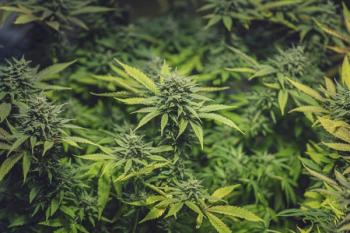
US Drug Overdose Deaths Reach Record High in 2020
Drug overdose deaths, including opioid-related deaths, have increased rapidly in the United States in recent years, according to preliminary data from the CDC.
In 2020, US drug overdose death rose by nearly 30% to a record 93,331 national deaths compared with the year before, according to provisional data reported by the CDC.
New Hampshire and South Dakota were the only states with a drug overdose death decline from December 2019 to December 2020. All other states in the United States had increases. These increases ranged from high in South Carolina with a 51.9 percent change to the lower end in New Jersey with a 1.1 percent change in predicted deaths, according to the report.
The National Center for Health Statistics analyzed drug overdose deaths reported monthly, with the cut-off being the first Sunday of each month. Death estimates include deaths occurring within the 50 states and the District of Columbia. Of note, provisional estimates of drug overdose deaths are reported 6 months after the date of death. This is because the lag time between when the death occurred and when the data became available for analysis is longer for drug overdose deaths compared with other causes of death. Thus, death counts are reported in “12-month ending periods.”
Mortality data were reported by the World Health Organization and the ICD index was used to classify deaths.
The drug categories presented include:
- heroin;
- natural opioid analgesics, including morphine and codeine;
- semisynthetic opioids, such as oxycodone hydrocodone, hydromorphone, and oxymorphone;
- methadone;
- synthetic opioid analgesics other than methadone, including drugs such as fentanyl and tramadol, and;
- psychostimulants with abuse potential, which includes methamphetamine.
Drug overdose deaths may involve multiple drugs, so a single death may involve more than 1 category when describing deaths. Therefore, there may be an overlap in the statistics, the report noted.
Drug overdose deaths often require lengthy investigations, and death certificates may be initially filed with a manner of death “pending investigation” and/or with a preliminary or unknown cause of death. When the percentage of records reported as “pending investigation” is high for a given jurisdiction, the number of drug overdose deaths is likely to be underestimated.
The 12 month-ending period and the percentage of records with the manner of death reported as “pending investigation” were used to predict the degree of underreporting in provisional data relative to the final counts. Results from these models were used to generate a set of multiplication factors that could be applied to the reported provisional counts of drug overdose deaths to estimate predicted provisional counts.These predicted provisional counts may represent a more accurate picture of recent trends by accounting for reporting delays related to the percentage of records in provisional data with the manner of death “pending investigation.” True declines or plateaus in the numbers of drug overdose deaths across the United States cannot be ascertained until final data become available.
The timeliness of drug overdose death reporting has improved in recent years. Adjustments for delayed reporting are based on final data from 2019. Relative to final data, 12-month ending provisional counts of drug overdose deaths for 2019 were 98.3% to 99.2% complete after a 6-month lag. The degree of underestimation was largest for 12-month periods ending in October and November. Completeness was slightly higher in 2019 than in 2018. With improvements in reporting and completeness, predicted values will be closer to reported values and the completeness of reported drug overdose death counts may be higher than in prior years.1
Pharmacists have a unique role in the growing opioid crisis, as they can counsel about opioid risks and
Reference
Vital Statistics Rapid Release - Provisional Drug Overdose Data. Centers for Disease Control and Prevention. Updated July 14, 2021. Accessed July 15, 2021. https://www.cdc.gov/nchs/nvss/vsrr/drug-overdose-data.htm.
Thakur T, Frey M, Chewning B. Pharmacist services in the opioid crisis: Current practices and scope in the United States. Pharmacy. June 2019. Doi:
Newsletter
Pharmacy practice is always changing. Stay ahead of the curve with the Drug Topics newsletter and get the latest drug information, industry trends, and patient care tips.















































































































